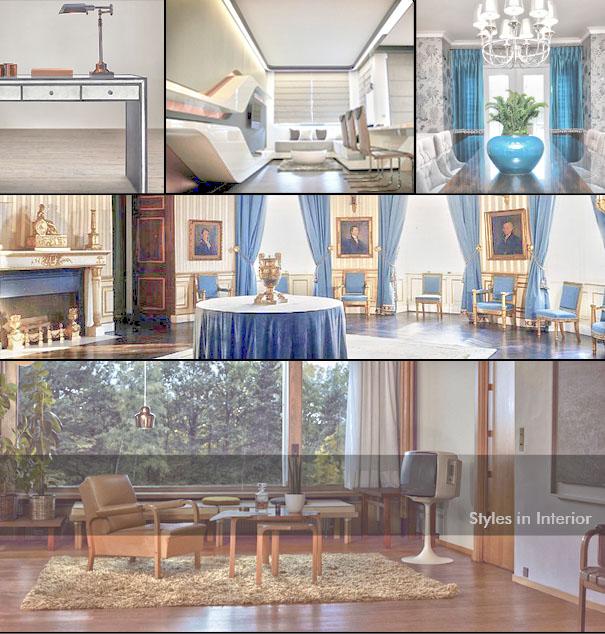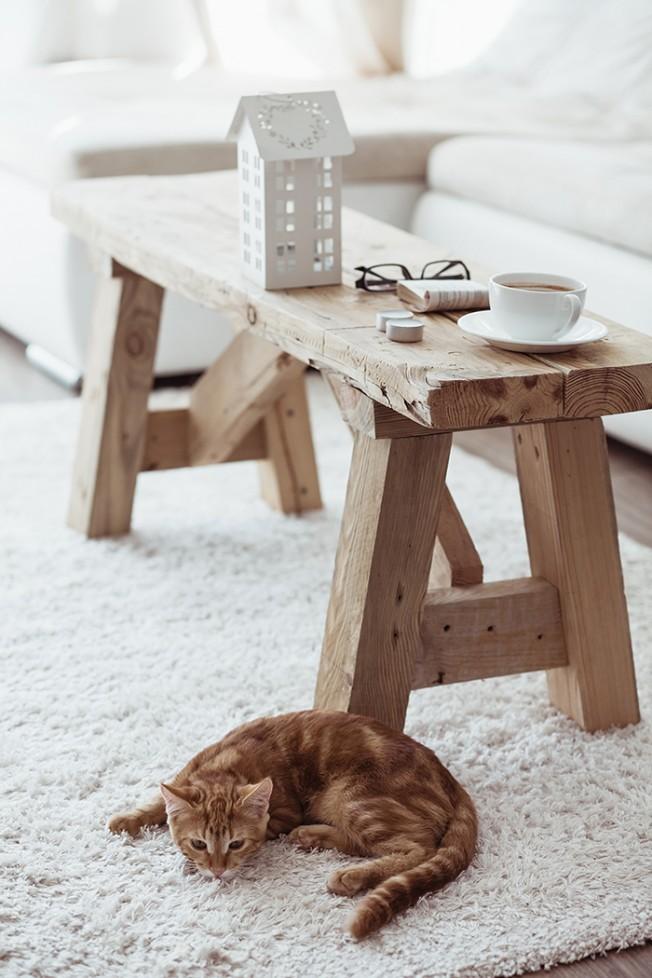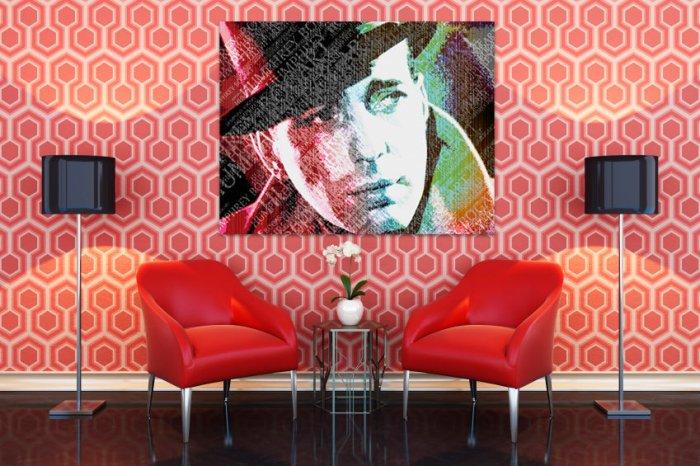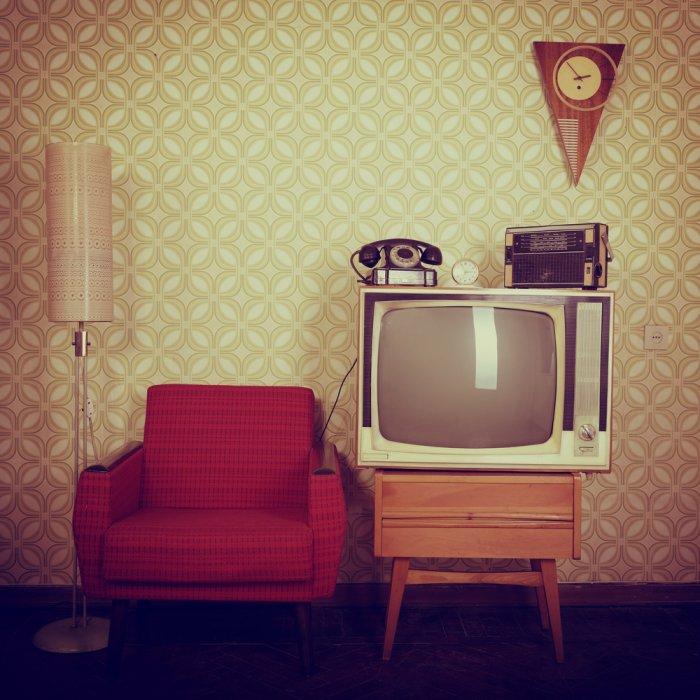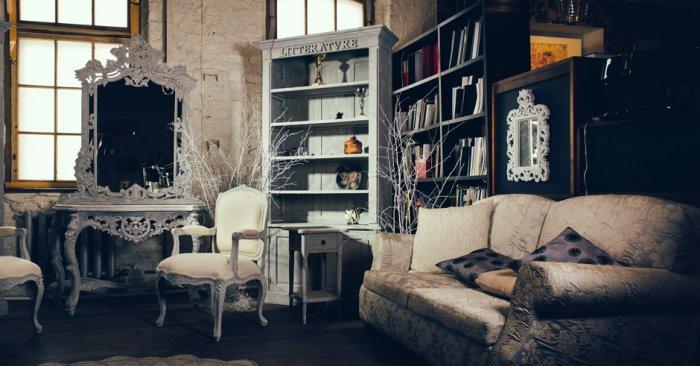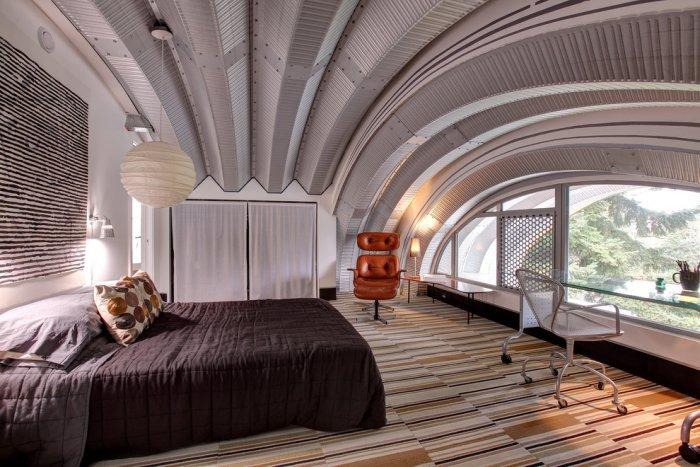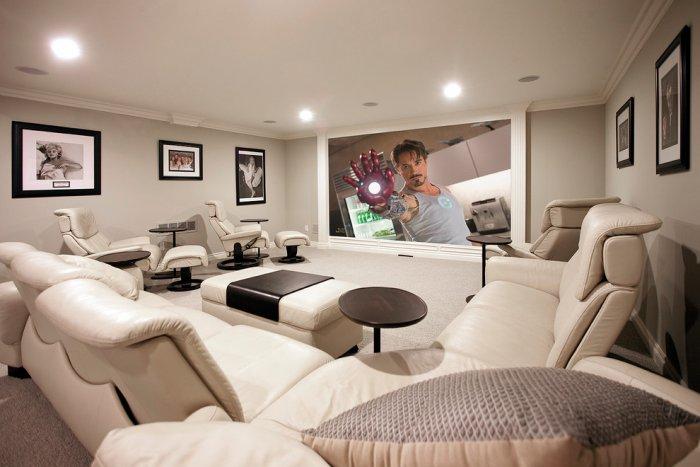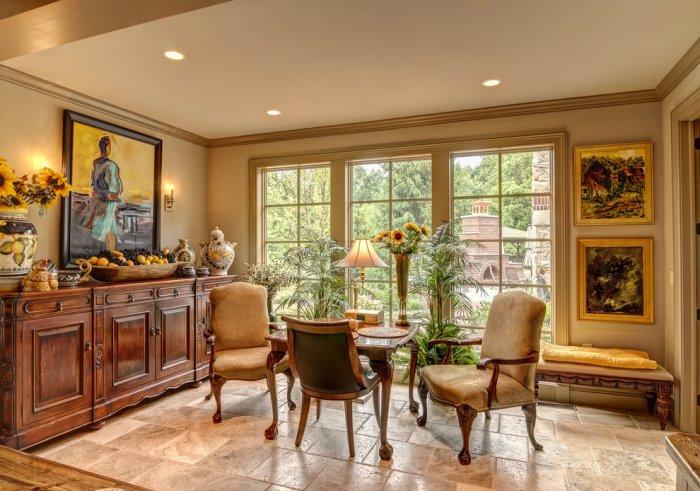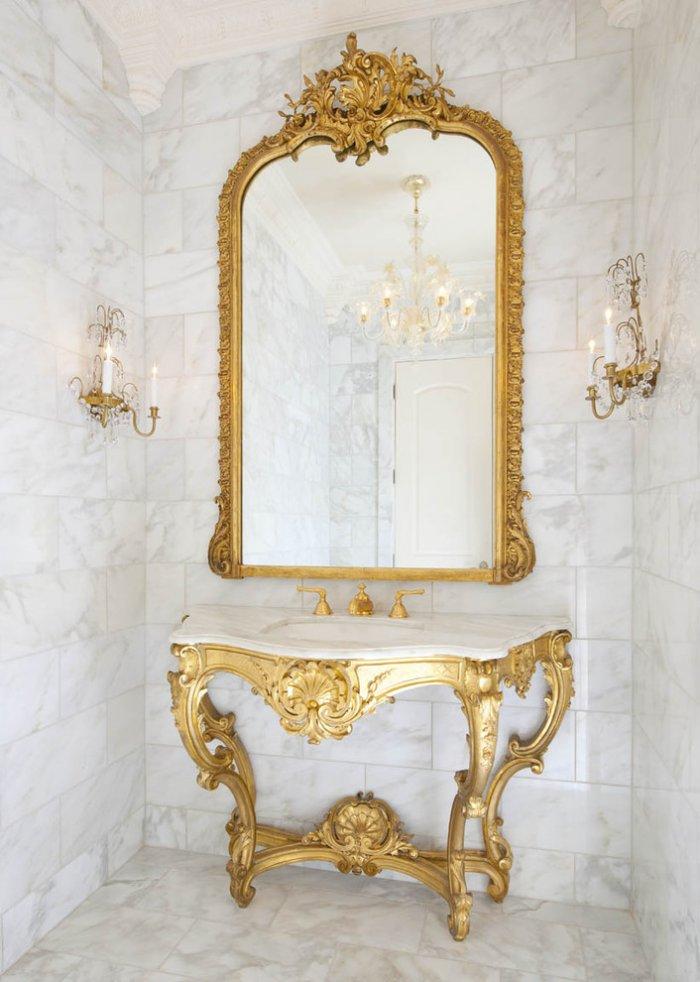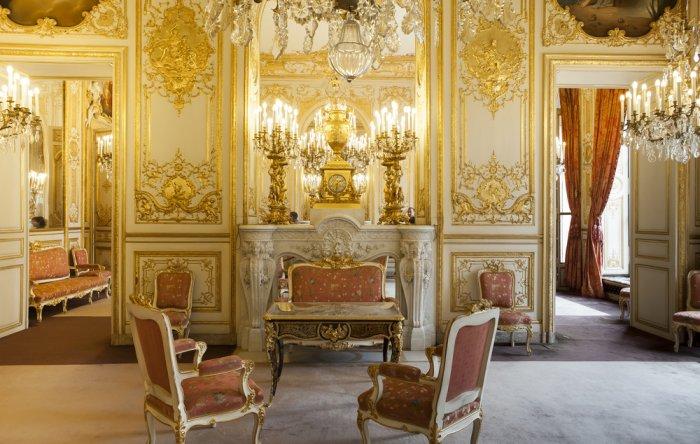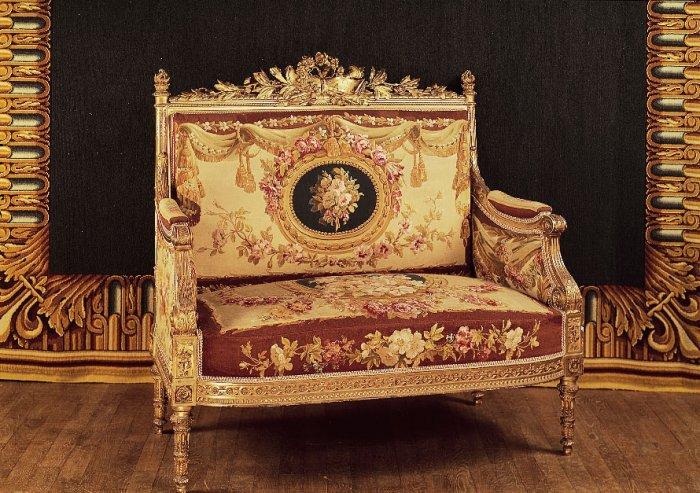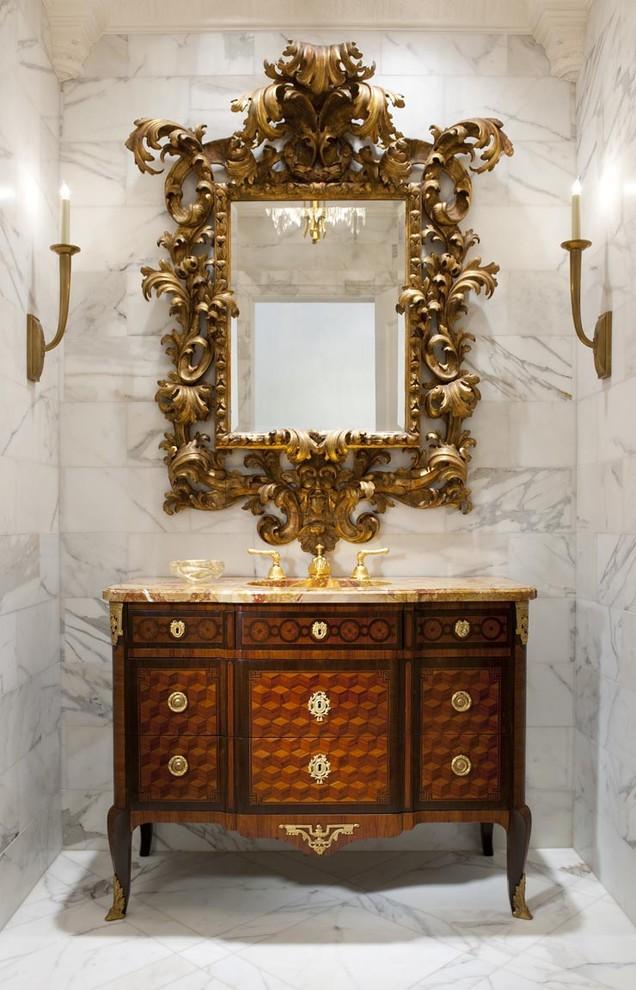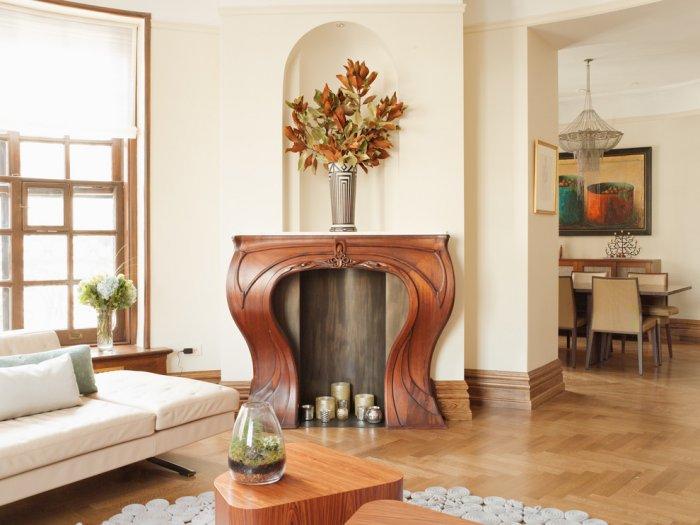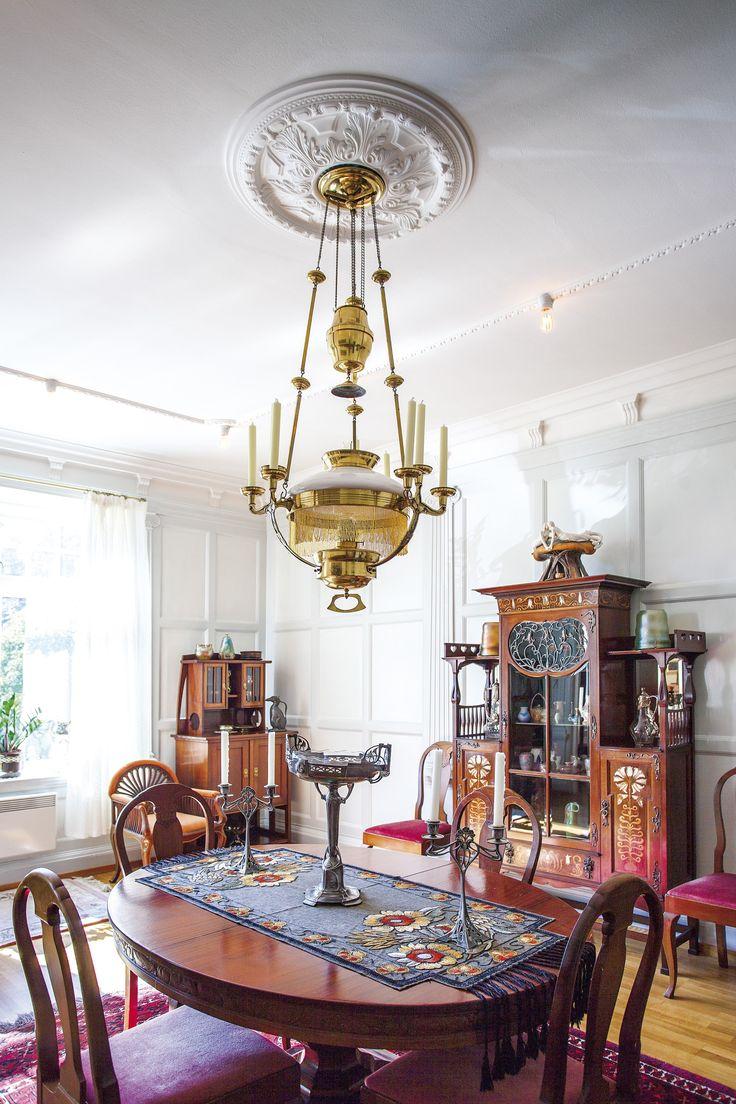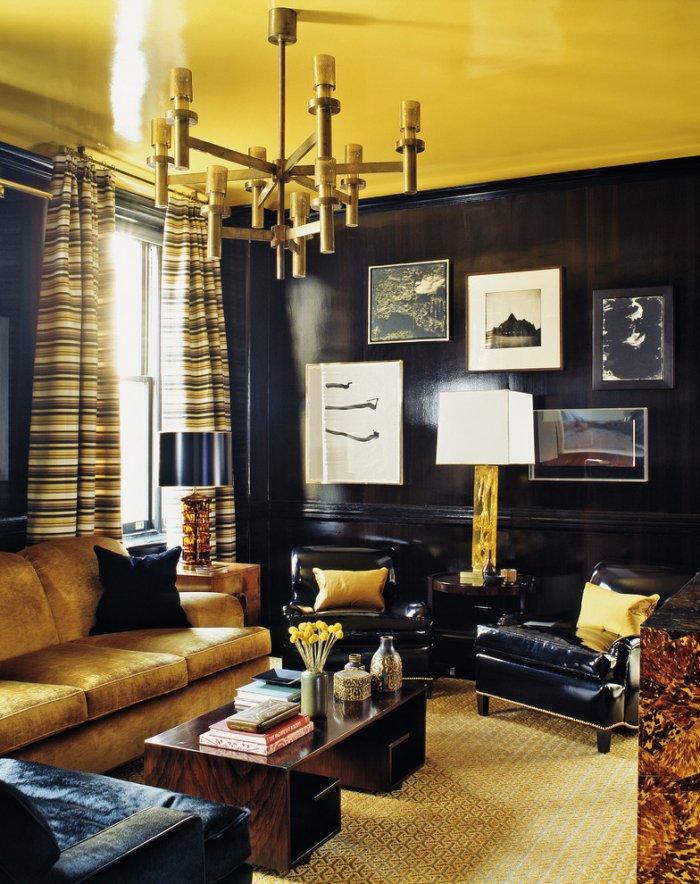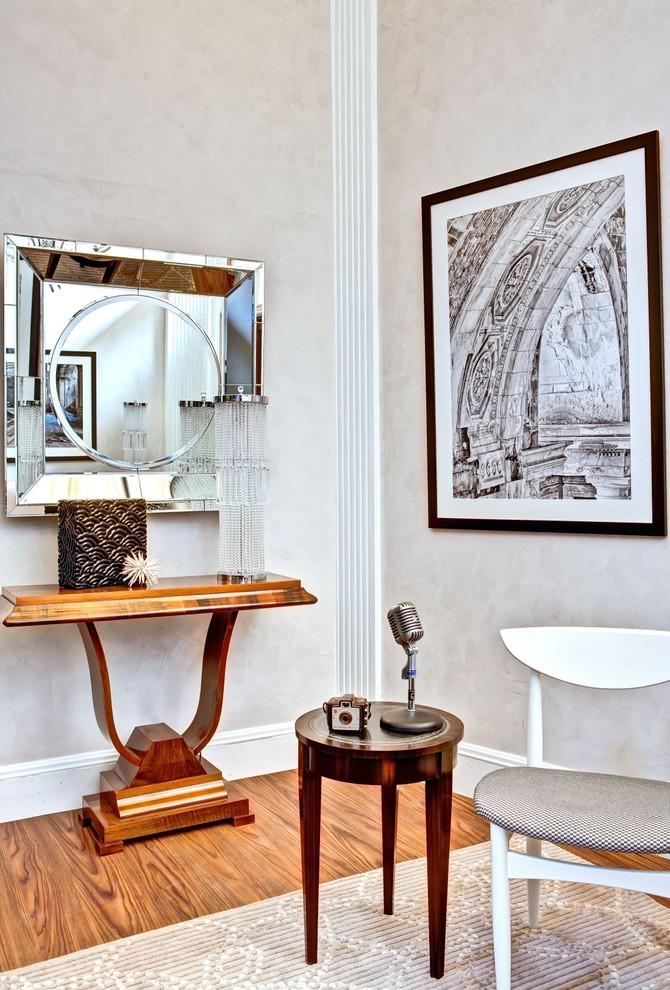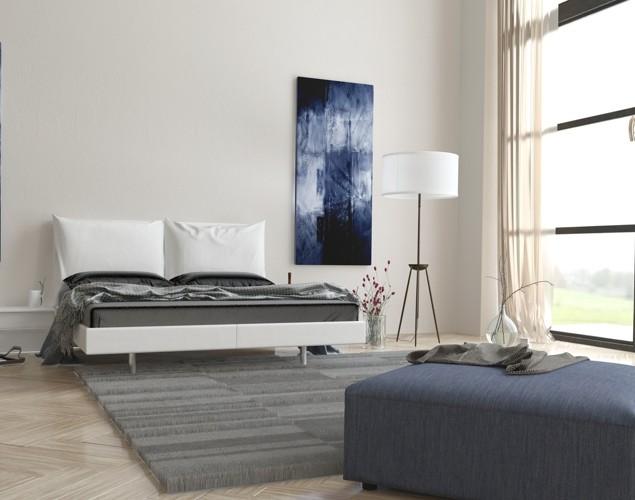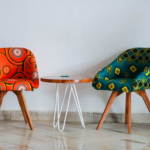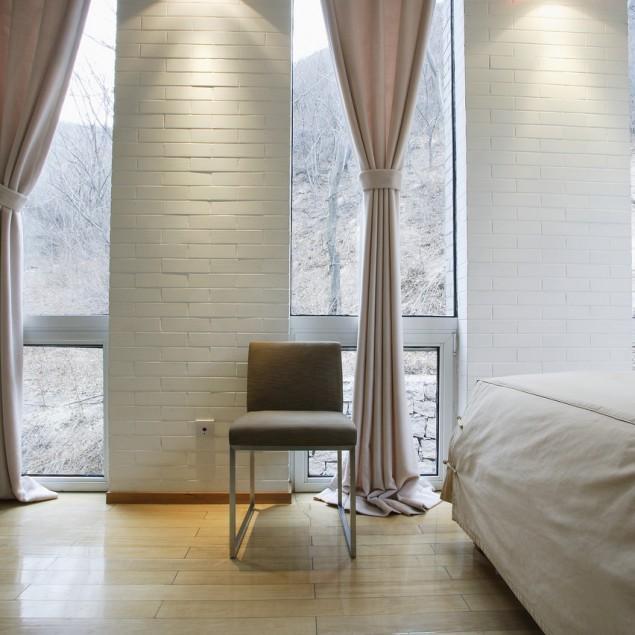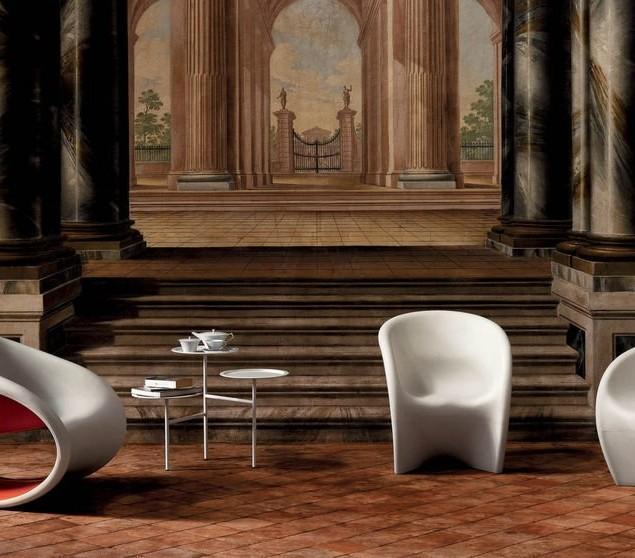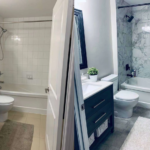Today I want to pay special attention to the origins of interior design. I want to describe what are the most common styles that were developed before today’s contemporary lines and I hope that you will find the patterns that can be seen back then and now. I will really be glad if you enjoy this educational information that I have collected for you. So, let’s begin our journey in the world of interiors!
Eco Design
The Eco Design is very interesting theme nowadays. Now I am going to present to you what is the exact purpose and why they call it Eco.
This is actually an approach in projecting where the effects on nature during the entire living cycle of the product take the major role when deciding which solutions is best. This is a responsibility and understanding what print every human action leaves on Earth.
You can give a second life to almost every kind of garbage these days. There are eco houses, skyscrapers, restaurants, schools, offices and hotels. Recycled materials can be used in the very early stages of building a particular construction or when rebuilding an existing one. For example, many constructors use eco insulation that decrease the expenses that we spend for energy. There are also natural paints, double and triple glazed windows systems, solar panels, thermo pumps and heating with biomass. All these facilities and features have been invented in order to reduce the CO2 emissions that is a direct results from human activities. All the professionals in the building branch have united around the idea of removing the dangerous influences because of lack of actions. Recent studies have proven that thanks to Eco design energy consumption is reduced by 50%, dangerous emissions by 40%, waste by 70%, the life is getting better, the quality of air also, as well as the water resources are kept clean enough to ensure fresh water stocks for many years to come.
It is very important to take advantage of Eco Design not only on construction stage but also when the interior designers starts working on your home. You need to have fabulous imagination and perfect taste in order to create life to your old stuff. If done properly, the results can be very attractive. All types of eco ideas can be applied at your new living room, bedroom or kid’s room. There are many designers these days that believe in Eco interior design and actually they didn’t make a mistake. More and more people like designer’s work and the entire cycle seems to be finished. If you want an Eco home, you need to use natural materials like wood, stone, marble and everything else give from nature. Natural floorings have become more attractive even in the 20th century. Picasso, for example, took advantage from waste. In his collages that have been found you can clearly see the use of different wasted objects. And the interesting thing is that this works are considered masterpieces!
Retro Design
Retro style is very famous and popular interior design style. It’s influences by art deco and pop art and it is not only a style, trend or fashion but an entire reflection of the history of humankind and its every changing preferences. All begins after the Cold War. The colors that correspond with this style are vivid and highlighted. As for the details – they are filled with enormous amounts of ornaments. It is very typical to see decorative cushions somewhere at the sitting furniture, as well as use of metal. All that symbolizes one free society and style in furniture. The Retro style can be separated on three decades. There isn’t a big difference between them but as a professionals I can clearly distinguish the graduation of style.
During the 50s you can see luscious interiors with really intense colors. The goal of Retro is to achieve vivid contrast between colors. The most common nuances are pink, turquoise, yellow, blue, mint, green and the light and airy colors are electric: orange, blue, red and the classic opposition – black and white.
During the 60s there is a big change! It is both technological and social and everything reflects on the interior design. The hippie culture introduces “ethnic” motives. Words like “peace” and “love” are very common and they turn into symbols of time. Floral motives become more and more preferred for upholsteries, wallpapers, covers and curtains. Sometimes I feel that this trend has returned in its majesty but in a little bit different shape and in different directions. The minimalist style is a total hit where the most important details are highlighted.
From the 50s to the 60s the design can be described as classic retro.
During the 70s the retro style, even in India and Morocco, is various in colors. Fascinating colorful palettes are widely used in the design. This is the time of music which also helps a lot to the development of the style. More sparkling and illuminated as well as polished surfaces appear in many shapes and sizes. During this years you can also see graduation and freedom in furniture.
Geometric shapes have been extremely popular and as well as their use in patterns. You can spot them on wallpapers and textile materials with many other various motives. There are so many colors matched that even today it is a big challenge for everyone to percept such kind of concept as harmonious. In modern design, there are many references to the retro style but you can hardly see an interior projected in only one style. Putting a retro accent in modern room is something common mostly in vintage and eclectic interiors.
Vintage
Vintage is one of the most popular trends in fashion, cosmetics and interior design. The term originates from the French word “vintage” which means “wine with long-lasting qualities”. That’s why “vintage” in interior design can be combined with various items, that have proven their qualities in time which can also be “served” in contemporary “glass”.
Having vintage furniture means antique pieces and accessories from a certain period or time frame that have been perceived as luxurious by that time. If you want to have such kind of furniture at your home you need to pay special attention if they are authentic and have all the characteristics of the era or year when they were manufactured. This actually means that you need only the originals. You can find this kind of pieces in old antique shops where you need to carefully search for well-kept and preserved ones. In case you need to add only a few vintage decorative accents you need to be very careful since most of them are richly ornate and if you place more than one piece on a particular wall, for example, there is a big probability that they will overload the interior with their details. So, if you want to decorate – stay simple and add no more than one item on a certain point. You should also watch for not turning your home into museum of antique items. Arrange simply and with refined taste. Usually, the vintage items are produced in the years before the 50s of 20th century.
Buying an old piece of furniture can be quite an expensive act, especially in the case when you buy well-preserved originals. That’s why in interior design it is more about recreating the feeling of vintage than actually buying all that expensive stuff. Today’s world is so advanced that you can have a chair manufactured just two days ago with all the worn out typical vintage accents that you will meet in a piece made a hundred years ago.
A good idea is to place the vintage exhibits on white background or walls or another pale, elegant and gentle colors. This way the beauty of antique items will stand out. It is very hard to find antique wallpapers but there are many available options on the markets today. If you go for vintage wallpapers, try to find huge decorative floral accents.
Futurism
Futurism is a trend in science, art and literature that denies realism. It has appeared in the first decade of 20th century in almost every country in Europe. It evolved mainly in two areas – Italy and Russia.
Futurism is born in Italy with the first “Futurist Manifesto” by Filippo Tommaso Marinetti published in the French newspaper Figaro on 20th February 1909. Soon the text is republished by the Milan magazine “Poetry” with a new title – “The Founding and Manifesto of Futurism”. It all begins with the lyrical image of car ride which inevitably will end with a crash in a muddy gutter. The manifesto declares the refusal of existing until that moment values and stands against the art heritage in general. It searches for new ways of expression which need to destroy the existing artistic forms and notions of art. The love of dangerous activities, rebel’s instincts, the beauty of motion and speed, war, machines and all most advanced forms of industrial civilization.
French rococo
French Rococo refers to the period between 1720 and 1760. The 18th century in France is known as “the age of denial” and “the age of Enlightenment”. Many philosophers work during this century. Persons like Voltaire, Diderot and Rousseau. The struggle is against the church as institution and absolutism.
During the 17th century the building processes are moved from king’s castles to towns. The raise of the commons evolves in new buildings – stock exchange, commercial buildings, public theatres. There is also a huge raise in the role of cities and the new types of private and public buildings. The unity between interior and exterior is almost removed. Decorators prevail. The new Rococo style is created by the young architect Pierre Le Nôtre around 1710. It quickly becomes the main interior design style. When looking at some examples from that period you can clearly find the delicacy all the details have been made with. Professional projection of study rooms and small spaces as well as decreasing the volume of living areas are also part of the new trend. One of the most remarkable works for the Rococo period is probably the building of the Nancy’s city center.
The furniture in Louis XV style are various in style and they reach high technological perfection. A huge attention is paid on upholstery. All the pieces are projected in order to be comfortable. After 1720 there is not a single straight line and the construction stays invisible. Furniture legs are finished with volute on heel. Furniture is gold, polished and with covered with wax. One of the remarkable characteristics is the use of reed braids.
Bergère is a kind of upholstered armchair with closed armrests and free seat and without a doubt, this is the most typical piece of furniture for the time of Louis XV. Couches are projected in a set with the armchairs.
Day lounges and couches are very popular in the period of French Rococo. Beds with four columns and canopies are not longer a trend by that time. Instead, the French preferred Rafraichissoir tables. They are similar to servants but without any doors and has been typically used for intimate nights. The goal was to restrict the stuff bringing wine and thus disturbing the homeowners. It was usually placed behind every person having a meal so that he could easily reach on his own everything he needs.
All the tables are carved and gold. They are put in the middle of a wall with paneling or between two windows, under a mirror, etc. One of the most remarkable pieces are the consoles with their extravagant shapes and looks.
There is another very interesting thing about that period. Tables for playing cards become extremely popular. The typical for them is the square countertop and carved drawer. On its turn, the countertops is separated in three parts. Both ends can be folded outwards and can be used as shelves for storing different bathroom accessories. The middle section can be lifted upwards and thus it reveals a mirror. Under the central part there is a folding out countertop and under it – a drawer. As for the decoration during this period you will find amazing mahogany veneers and gold or bronze applications.
The cylindrical desk is introduced in the middle of the 18th century. Its rectangular countertop is covered with quarter cylindrical cover which when turned backwards reveals folding out another countertop covered with leather. The comode is one of the most fashionable pieces of furniture during the French Rococo period. It is placed under a mirror looking similarly to the console table. The bombe comodes are bulged from all sides and have marble countertops and carved drawers.
French Baroque
The leading architects in the time of Louis XIV are Jules Hardouin Mansart, Louis Le Vau and Claude Perrault. The style can be separated on:
Early – around 1640 – 1660. Characterized by the influence of Cardinal Mazarin.
Matured – around 1680 – 1690. Characterized by the transformation of foreign elements in French national style.
Late – after 1690.
Louis XIV style is a true Royal style which is very expensive to be imitated. Louis XIV believed that the most suitable interior for a real kind should be those which reflected this Royalty and that’s why he hired only very talented professionals. He builds them working places and homes in the huge Louvre gallery. This was a sign of respect and honor. The giant gallery has been divided into small living areas which were lent to all types of masters, furniture makes, painters, sculptors. This privileged people live there with their families.
The halls of the French Baroque are covered with mosaic parquet in decorative geometrical motives. Walls are decided with large panels with hanged tapestry. It is very common to see gold details and picturesque carvings as well as mirrors in golden frames. The ceilings are made from plaster divided in large sectors. Console tables and low-in-height chest of drawers are put against the walls. Usually, they have rectangular shape but there are also examples with curved and bended details. Symmetry is an essential feature. Legs with square profile which are getting narrow downwards – this is how we can describe the sitting pieces of furniture.
During this time frame the most used materials are wooden – ebony, walnut, beech. Richly carved furniture for sitting are made of softer or coniferous wood. Walnut and beech are mainly used for large cupboards. Chairs and tables as well as cupboards are primarily made of walnut wood. One of typical things for the period is the use of beautiful marble countertops of tables with gold carved construction. Upholstery is usually in vivid red combined with other solid colors in contrast to the golden accents and dark ebony wood. Silk with embroidery imported from the Orient, velvet, upholstery, satin, taffeta – all the has been introduced after 1680.
Furniture is usually with large sizes and with rectangular silhouette. Backrests are entirely upholstered which talks of very comfortable furniture. Couch as a type of furniture has been officially introduced during Louis XIV’s reign. This pieces are manufactured in sets with upholstered armchairs. The carved bed constructions are heavily covered with draperies which had a functional application – to prevent the person who rests from air tides which can cause him illness.
Day beds and lounges begin to appear around 1620 and develop the way they look in different directions. Tables are massive and their countertops decorated with intarsia wood or with inlay of turtle shell. The use of stone mosaic patterns or marble is very common. Legs, drawers and rails are usually covered with gold. As I have already written, during this time period is the rise of different kind of tables according to their functional applications – for playing cards, for working needs, for bathroom accessories. The writing tables of André Charles Boulle are very famous. Another typical item for the period is the so called “bureau semainer”. It consists of seven drawers – one for each day of the week.
There are also many cabinets made of ebony and they are placed on golden stand. Usually, the cabinets are inlaid with stone mosaic patterns, metal, turtle shell or applications of golden bronze.
In the baroque interior it is very typical to see different accessories like pedestals or clocks on fireplace mantels as well as giant mirrors with gold carved frames. Another typical material used in the manufacturing process is silver.
Empire
Usually only referred to the period when Napoleon is an emperor, the style actually have its roots in the Louis XVI period. Later it has been developed during the periods of the Directory and the Consulate and it reached its maturity between 1804 and 1815.
In this time frame the buildings were being built similarly to antique temples. The facade windows have typical finishings – half-circle in their upper part. Main decorative accents are laurel wreaths, garlands, rosettes and relief figures.
L’église de la Madeleine, projected by Pierre Contant d’Ivry as a Christian temple was later finished as “Temple to the Glory of the Great Army” by Pierre-Alexandre Vignon. There are many other points of interests that has been built later – the “Arch of Triumph”, “Place Vendôme”, etc.
The interior can be characterized as one with stylish unity of all internal details and elements. There is a line of order, roughness and symmetry. Compositions are strict and geometrical. Wall decorations include pompey scenes, trophies, laurel wreaths, eagles, lotus capitals, sphinxes, gilt bronze appliques.
Empire furniture makes are strictly identical. Their shapes are based on architecture. The severity of the line is broken by carved ornaments of wood, bronze, gypsum and marble. Commodes can be either rectangular or curved – with gold bronze applications. Chairs are much heavier than in the precious styles and their shapes are mostly rectangular. They also have rests for arms carved in the shape of sphinx. They can also be upholsteries in textile that matches the other decorations. Most of the couches are produced with massive mahogany. Actually, mahogany is widely used by Georges Jacob in his chairs. Wood materials that manufacturers use are walnut, beech, pear, maple, linden, elm, ash and yew. I have to also mention the use of gold glass tiles.
Art Nouveau
Art Nouveau is famous under many different names among all European countries. In Italy it is called “Stille Libre” and in Germany is called “Jugendstil”. In France they called it “the pasta style” because of its soft lines. The main materials used in the interiors and constructions are wrought iron and glass. All the manufacturing processes has been perfectly captured by Émile Gallé in France and Louis Comfort Tiffany in America. The name originates from Maison de l’Art Nouveau – a shop in Paris which opened its doors in 1895. The founder – Samuel Bing.
Victor Horta is the artists who creates the Belgium type of Art Nouveau in architecture. He introduces the style with his famous house – professor Tassel’s house, built in Brussels in 1892. Henry van de Velde is another person who stands in the foundations of the style as creator and theoretician. His beliefs guided him to found the “Van nu en” magazine in 1893. This was the first issue that spread the Art Nouveau style among the public.
The new Art Nouveau establishes for a long time in France where it stays longest. Two are the cultural centers of the style. The first one is in Paris and its ambassador is Samuel Bing and the other is in Nancy under the guide of Émile Gallé. If you look at furniture made by the second person you will clearly find some stylish lines take from Louis XIV, Louis XV and Louis XVI periods.
Louis Majorelle is born in Nancy and is one of the greatest artist of this trend. He is person that continues his father’s business in 1879 and starts projecting furniture in the trendy by that time Louis XIV, Louis XV and Louis XVI styles. Actually, he preferred the French Rococo and that’s why only at the end of the century he started projecting in Art Nouveau interior design style. His furniture are targeted to the middle class and their price is affordable.
Secession
Secession is the first international trend in architecture and decorative art. It is born as a reaction to eclectic style and it is searching for new ways of expression. The new trend with underlined decorative and application character appears in the period between 1890 and 1910. It is accepted that the beginning is when a group or artists protest against the official academic art. They leave the
team of Munich art organization called „Glastplast”. The style is quickly spread in Europe and it is well accepted everywhere. It also has different names according to the region where introduced:
Austria – Sezession;
Germany – Jugendstil;
France – Art Nouveau;
England – Modern Style;
Italy – Liberty;
Spain – Modernissimo;
Russia – Style Moderne.
Architecture is characterized with original logic and newly introduced materials like cast iron, wrought iron, reinforced concrete, stainless steel. Asymmetrical compositions establish their roots. This also reflects on all types of consoles, elliptical lines, abstract plastic shapes, ornaments and others.
Inside in the interior, the walls become brighter and more colorful with whimsy curved lines not following any kind of limitations. More and more often there are inlays or covers with ceramic or faience. The ceilings are decorated with gypsum plates in flat relief.
In the visual look of all the crafts used in the interiors you can clearly distinguish two major lines.
The first one is decorative. And it can be described as one of the most whimsical forms of art. It appears in France, Belgium, Italy and Spain. Very famous representatives of this decorative trends are Hector Guimard, Émile Gallé, Eugène Gaillard, Antoni Gaudí. All types of furniture can be described as light, grace and mobility.
The second one is constructive. It lead to simple line and shapes and minimal décor. It appeared in Germany, Austro-Hungarian Empire and Great Britain.
One of the most typical things for this time period is the underlined preference for massive materials. There are many items produces from wrought iron, unstrained bronze, carved copper, glass tiles, ceramic, precious materials. The colorful compositions are built-in mild and pale colors: light grey, blue purple, pastel green, grey to water green, brown with autumn or chestnut tones. Ornaments are linear. You can also see some motives of stylished flowers and other plants. Furniture is tectonic, elegant and with strictly shaped geometrical loop. The major principles to be observed in the creation processes are comfort and practical application.
The most famous representative of the architecture trend are Richard Riemerschmid, the artists August Endell, Henry van de Velde, architects Otto Koloman Wagner, Josef Hoffmann, Gustav Klimt, Charles Rennie Mackintosh.
Otto Koloman Wagner is one of the key figures in the cultural life of Wien. He is an architect and town builder and he influences on an entire generation of architects because he was also a teacher in the Academy of Arts. One of his most amazing works include subway stations, the correction of the Danube’s bed, the ensemble around barrage Nusdorfer Nadelver, the Steinhof church, the The Austrian Postal Savings Bank building.
His style is very directly connected with Otto’s two students – Josef Hoffmann and Joseph Maria Olbrich. They later became one of the the founders of the Wien Secession. Their goals was to start from the scratch. Since the architects weren’t so into furniture the items that later has been produces somehow represent the architectural trends. The so called “Sitzmaschine” is probably the most indicative item for Hoffman’s philosophy.
The center of the development of the style in the United Kingdom is in Glasgow and its most vivid representative is the architect Charles Rennie Mackintosh. Mackintosh treats every room in a single building as something coherent. He projects every single item in order to make an overall impression of connection between the separate functional areas. Each piece of furniture is dedicated to a specific kind of arrangement. Both his architectural works and furniture items are famous with its linear shapes. The decorative elements have never been used in order to overload the atmosphere. The décor is used wisely and in strictly planned manner. The “Hill House” villa is designed by Charles Rennie Mackintosh in 1902 in Helensburg, Scotland. The architect is famous not only for his buildings but also narrow chairs with high backrests which usually can be up to 6 feet. The “Hill House” chair is very indicating for the trends towards ornamental abstraction.
Ingram is another type of chairs projected for Glasgow’s tea houses. They are usually grouped around tables and thus they create a sense of intimacy. Argall is the name of a famous tea house which later turned out to be the name of the chair which is typical for this regions. This is the only model of Mackintosh’s chairs that is completed in oval shapes – something that is very common in Art Nouveau.
Mackintosh’s interiors reveal Japanese influence with the feeling of spaciousness achieved by the small amount of furniture. Rectangular silhouettes and the interaction between verticals and horizontals, squares and rectangulars and their value as decorative elements stimulated all Austrian artists that have close relationship with the Scottish academy far greater than the fashion floral experiments that French made. Actually, after Mackintosh used it, square became one of the most preferred shapes and motives in all the interiors afterwards.
Art Deco
The period between the two world wars in many terms can be characterized with strong contradictions. Industrialization in the end of 19th century is the reason for disappearance of many traditional crafts. The Art Decor style reflects the technological revolution and at the same time the picturesque breeze of bygone eras.
This is an international style widely spread thanks to the movies industry and photography, newspapers. Of course, there is also a big percentage of adoption. The main purpose of the style is towards abstraction and usage of simple lines, volumes and colors. New ideas develop in order to create functional items and architectural objects. There is also a full denial or ornaments and geometrical decorations. The Art Deco style actually grew out of the previous Art Nouveau. It appeared like a reaction to its predecessor. Inspiration for this interior design style comes from African art, Egyptian art as well as Aztec art. One of the specific things about the style is the combination of all that characteristics and in general it evolves in France, USA, particular areas in Germany, United Kingdom, Russia and others.
In the furniture and interior you can clearly see interpretations of shapes from the Louis XVI styles, Empire, Art Nouveau. One of the main aspects of the furniture made in that period is the usage of expensive materials. Art Deco examples can be found in the few preserved decorative elements in the luxurious SS Normandie transatlantic liner. As for the architectural example, pay attention to the famous Chrysler Building in New York, the building of New York’s Radio City Music Hall, many buildings in Chicago, the Hoover factory in United Kingdom, etc.
Furniture coming from that period has very elegant proportions. The shapes are simple, massive, influenced by cubism. In sitting pieces you can clearly see the pursuit of convenience. The seating height is reduced. Chairs have oval backrests and the seats are soft and upholstered with textile or leather. Armchairs are conservative with curved armrests.
Tables are very various. The top surface has geometrical shape – oval, circle, octagonal, rectangular or square. Usually, it is made of marble. Drawers are wide and legs – heavy, curved, straight or spindly. Sometimes, they are made of wrought iron. Desks have many drawers. Beds have rough boards. All of them are filled with expensive wood material and can be upholstered with leather. Inlays of ivory or delicate motives of gold or silver bronze can also be seen. Commodes used in this interiors look very much like from those used in the period of Louis XVI’s reign. Cupboards are bulky.
